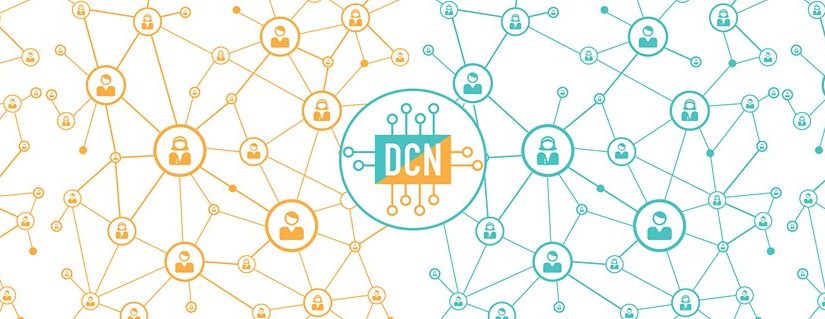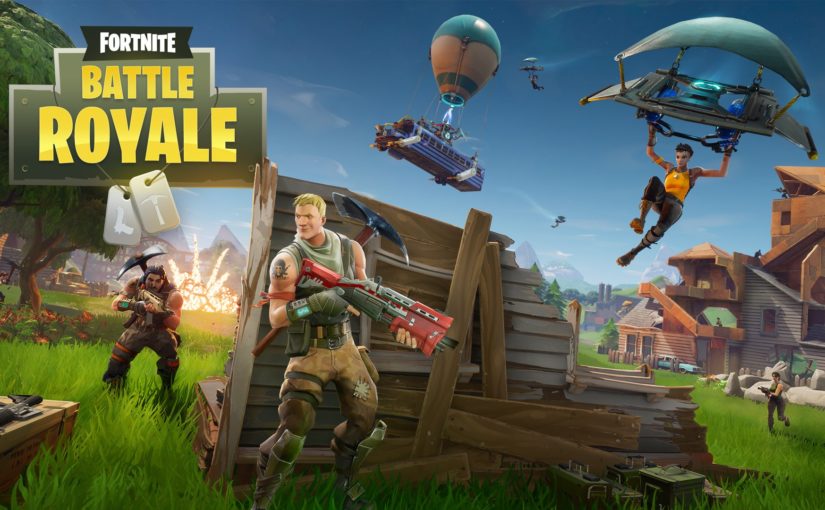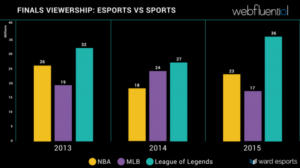Abstract
Tabletop role-playing games such as Dungeons & Dragons have made the shift in recent years from a purely offline gaming system to functioning online, albeit with minor adjustments to format. As a game system that relies upon the players investing themselves in a fictional world that they will flesh out with their own created identities aka player characters, this paper will aim to explore the relationship between the identity of the player and the player character. The performance and shifting of these identities will be a central focus as well as the unique problems that will need to be addressed when playing a game of Dungeons & Dragons.
Keywords:
Gaming, Tabletop, Role-Playing, Dungeons & Dragons, Identity, Performance
Identity within Dungeons & Dragons
This paper will discuss the importance and function of identity, specifically the creation and performance aspects, with regards to tabletop role-playing games in an online space. Dungeons & Dragons, as perhaps the most well-known of all role-playing games, will be used as a case study for discussion in this paper. Firstly, a brief introduction of Dungeons & Dragons will be given as well as an explanation of how it functions as a game and what the shift to a digital format has changed for the system. Secondly will be an exploration of the creation of identities within the game system followed by the performance of these identities, as well as how players differentiate between the player and the character. This paper will also briefly explore the relationship between the identities of the player and character. This will be followed by an exploration of why performative identities within this system differ from other online spaces and unique problems involving meta-gaming that relate to identity. Lastly a brief exploration of online role-playing games as communities will be discussed. This paper will aim to argue that identity creation is a core aspect of online role-playing games which enables the performance of a separate fictional identity in a socially accepted format.
History and taking the offline online
Dungeons & Dragons, much like other tabletop role-playing games, is essentially a group storytelling experience with structure and rules to guide it. This is done through a dungeon master guiding the group through the narrative of the adventure and reacting to the actions the players wish their characters to take. Gary Gygax, one of the creators of Dungeons & Dragons, described it as a “Group cooperative experience…There is no winning or losing, but rather the value is of imagining yourself as a character in whatever genre you’re involved in” (Schiesel, 2008). As Dungeons & Dragons has existed since the 1970s it was not initially created to be played online (WoTC, 2018). While Dungeons & Dragons is still primarily played offline its transition to online has allowed many new people to take up the hobby who were previously unable to play. When players begin a game, they create a character that they wish to play within the world, this is known as a player character. This differs from other online spaces, where creating an avatar is a common aspect, in that the player will be asked to flesh out this identity beyond the simple choice of a representative image and name. This greater depth to the identity allows the player more flexibility in the identity that they wish to create and can make them feel more involved in the game as aspects of their characters backstory can be injected in the adventure. Pearson (2009) states that “online, users can claim to be whoever they wish”. This statement applies directly to online role-playing games as they are a system that allows for extensive creative freedom. This player character can be given a backstory, personality or wants and needs separate to those of the player. The player would then perform this identity within the context of the game world, making choices from the perspective of the character that they have created.
An important characteristic of offline play is the ability to see the other players, which provides players the ability to visually identify the other players. Identifying other players with whom you are going to undertake a group storytelling experience is important to understanding and evaluating an interaction (Kollock & Smith, 1996). When playing in an online space players are often limited to text or voice chat as the primary form of communication which can remove a visual factor from play, namely the fact that the players may not be aware what everyone they are playing with look like. This can benefit some players by providing them a level of anonymity within play which could in turn provide an extra level of confidence. Offline players may be more hesitant to try and roleplay a certain type of character or accent for fear of embarrassment due to the other players being in the same room as them while online this fear can be lessened or removed completely.
Getting into character
As Dungeons & Dragons is a storytelling experience, a core aspect of the game is being able to understand and perform the identity that players have created within their characters. Creating a new identity to be performed is not a concept applied solely to role playing games. Performing as a created character within a role-playing game is essentially a form of acting, albeit with a heavier focus on improvisation. There is no script within a game of Dungeons and Dragons for the players to follow and so a large portion of the game must be created on the spot or as a reaction to whatever is happening, this allows for a form of fluid storytelling unique to tabletop role-playing games. As players grow more comfortable with their characters, whether through further play with that particular character or experience with the game, it becomes easier for them to perform that specific identity. Performative identities are discussed by Goffman, as cited in Pearson (2009), who discusses identity-as-performance from a theatre perspective with regards to a frontstage, which is the observable space when the character is in the spotlight, and the backstage where players are able to ‘step back’ from their performed identities and discuss the game as a meta level commentary. People use different methods to inform the other players whether they are speaking as a player or a player character. This can be done through the ‘frontstage’ implementations such as the use of accents or speech patterns or a ‘backstage approach’ by referring to the character in the third person such as saying, “my character would know this”.
As Dungeons and Dragons is a group experience there are potential difficulties that arise from players abusing the backstage approach to performative identity, hiding behind a common excuse of “That is what my character would do” whenever they do something that is considered ‘evil’ within the alignment structure of the game. There are countless threads that exist on the internet regarding players having difficulties with a player within their game who is hiding behind their characters identity as an excuse for their actions. RPG Stack Exchange is a website dedicated to solving problems with game systems and has a forum that allows users to ask questions of the greater role-playing community, within this forum there is a discussion about how to handle a difficult player whose character is killing innocent civilians while traveling in a group with the fantasy equivalent of an ex-police officer (Stack Exchange, 2018). The first player is quoted as saying “It’s how his character is played” while the second player is saying that as his character is good aligned, he now has enough reason to kill the offending character. This type of interaction can have ramifications across two identity levels, the first being the death of players characters which can end the game for one player. The second is the potential issue it could within the group of players as the killing of another players character could upset that player. This kind of cross level emotional identity issue may not be unique to Dungeons and Dragons but does differ from other online spaces where the user may not be occupying different identity-spaces.
Meta-gaming
Being able to differentiate between the identity that a player is performing, as a character, and the players’ actual identity can be an important aspect of the game as meta-gaming is often frowned upon by both players and the dungeon master running the game. Meta-gaming can be described as attempting to game the game, using knowledge that the player has but the character would not necessarily have within the context of the game (Huvila, 2013). To manage the problem of meta-gaming it is important for players to be able to separate their real-world identity from that of the character they are playing. There is always going to some element of meta-gaming when playing Dungeons & Dragons as it is impossible to completely separate the identity of the player and player character. This meta-knowledge can lead to a player making a suboptimal choice for their character, knowing it is not the best choice simply because that is what they imagine their character would do. That kind of choice would be classified as good role-playing and applauded by the other players at the virtual table. Making choices as both a player and a character can be described as actor stance, making decisions based solely upon the characters knowledge, and author stance, making a decision based upon the knowledge of the player (Edwards, 2001). Although it is important for players to be able to differentiate between their character and themselves, there is an inherent link between the two. As mentioned earlier when a player makes a suboptimal choice knowing that it is what the character would do it can be difficult for the player to make the choice as they are intrinsically linked to their character and the potential for the choice to put the character in physical danger can be an emotional choice. This sort of relationship can be linked to the fact that because the player has created this character they are “imaginatively connected to the character” (Whitlock, 2012). As discussed above meta-gaming is a problem involving identities that can be applied specifically to Dungeons and Dragons as well as other online role-playing games while not necessarily affecting other online communities even within the gaming community.
Big virtual table
Due to the social nature of games such as Dungeons and Dragons, communities have long been formed around it. The shift to online has increased the number of players drastically (Hall, 2015). Popular online Dungeons and Dragons series ‘Critical Role’, a game hosted and played by actors and voice actors has contributed to the rise in popularity so much that it crossed into the offline space by having a billboard in Los Angeles. Dungeons and Dragons is a game that has in the past and continues to transition between the online and offline space. There currently exists no one central location for people who wish to play Dungeons and Dragons but there are multiple options depending upon the style of play people wish for with the most popular being Fantasy Grounds and Roll20 (Hall, 2017). Online role-playing games could be said to create multiple smaller communities simply due to the format. A group of players is its own small community, that group would also be a part of the greater community of the game that they choose to play which is itself a part of the even larger community that is online role-playing games. Individuals may exist within each of these communities to the extent that they wish however there must be input in the initial community in order for the game to function. Due to the multiple layers of communities it becomes a necessity for players to portray multiple identities (Koivisto, 2003). Players who wish to participate in the greater community will be unable to use the identities they have created at the table due to the lack of knowledge the community has regarding individual game stories.
Conclusion
This paper aimed to explore the concept of identity, primarily its creation and performance, within the context of online role-playing games. A history of Dungeons and Dragons was given as well as the impact shifting to an online platform has had on both how the game is played and its player base. The importance of identity and the differing ways in which it can be performed was also discussed. Concepts of identity-as-performance and frontstage/backstage play were also introduced and explored. The problem of meta-gaming and how it affects identity driven systems such as role-playing games was explained and discussed. Lastly the community and social factors were explored with regards to the online space as opposed to the traditional format of offline play. While there have been discussions online regarding the importance of a ‘true’ identity and the value of anonymity, it could be said that certain platforms such as online role-playing games should be viewed outside of this argument as one of the core aspects of the game is to create a fictional identity (Van der Nagel & Frith, 2015). Through exploration and discussion of the various topics introduced this paper argued that identity creation is a core aspect of online role-playing games which enables the performance of a separate fictional identity in a socially accepted format.
References
Edwards, R. (2001). GNS and Other Matters of Role-Playing Theory. Retrieved from http://www.indie-rpgs.com/articles/1/
Hall, C. (2015). Dungeons & Dragons is booming online, but not in the way that you think. Retrieved from https://www.polygon.com/2015/8/20/9172559/dungeons-dragons-dnd -4th-edition-one-year-later-twitch-youtube
Hall, C. (2017). More people are playing D&D online than ever before. Retrieved from https://www.polygon.com/2017/7/20/16005982/dungeons-and-dragons-online-roll20-data
Huvila, I. (2013). Meta-Games in Information Work. Information Research: An International Electronic Journal, 18 (3). Retrieved from https://files.eric.ed.gov/fulltext/EJ1044641.pdf
Koivisto, E. (2003). Supporting Communities in Massively Multiplayer Online Role-Playing Games by Game Design. Retrieved from http://www.digra.org/wp-content/uploads/digital-library/05150.48442.pdf
Kollock, P & Smith, M. (1996). Identity and Deception in the Virtual Community. Retrieved from http://smg.media.mit.edu/people/Judith/Identity/IdentityDeception.html
Pearson, E. (2009). All the World Wide Web’s a stage: The performance of identity in online social networks. First Monday, 14 (3). Retrieved from http://firstmonday.org/ojs/index.php/fm/article/viewArticle/2162/2127
RPG Stack Exchange. (2018). Best way to kill a problematic fellow players character. Retrieved from https://rpg.stackexchange.com/questions/68688/best-way-to-kill-a-problematic- fellow-player-character
Schiesel, S. (2008). Gary Gygax, Game Pioneer, Dies at 69. Retrieved from https://www.nytimes.com/2008/03/05/arts/05gygax.html
Van der Nagel, E & Frith, J. (2015). Anonymity, pseudonymity, and the agency of online identity: Examining the social practices of r/Gonewild. First Monday, 20 (3). Retrieved from http://www.ojphi.org/ojs/index.php/fm/article/view/5615/4346
Whitlock, K. (2012). Traumatic Origins: Memory, Crisis, and Identity in Digital RPG’s. In Whitlock, K & Voorhees, A., G (Eds) Dungeons, Dragons and Digital Denizens: The Digital Role-Playing Game (1st ed., pp. 135-152). New York, NY: Continuum International Publishing Group.
WoTC. (2018). History: Forty Years of Adventure. Retrieved from http://dnd.wizards.com/dungeons-and-dragons/what-dd/history/history-forty -years-adventure







